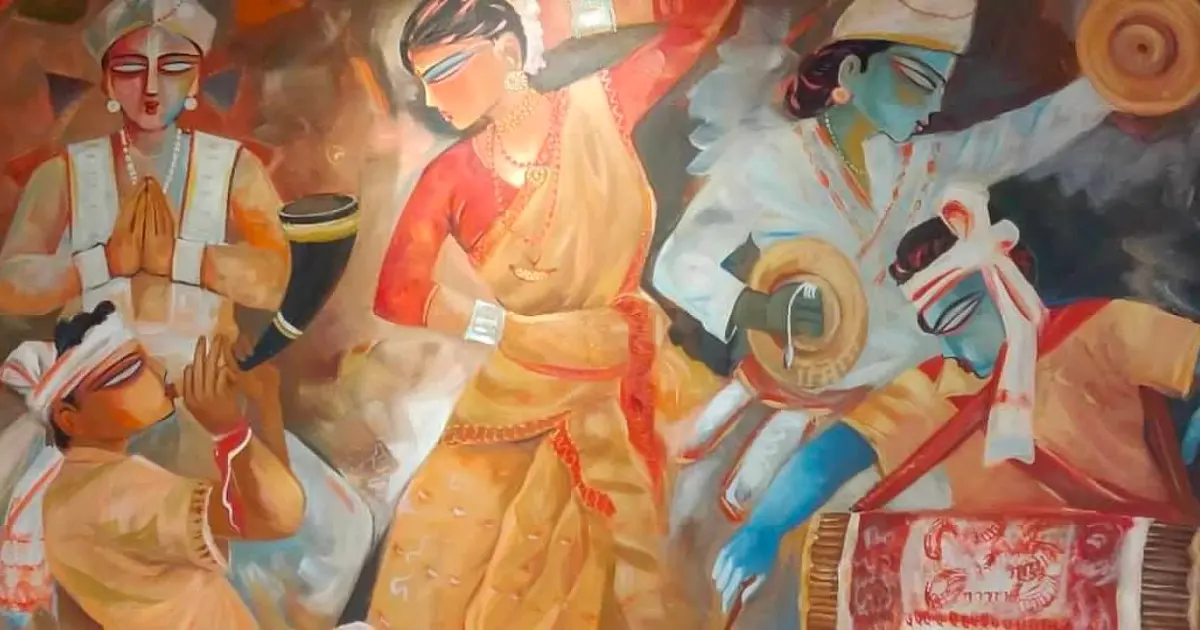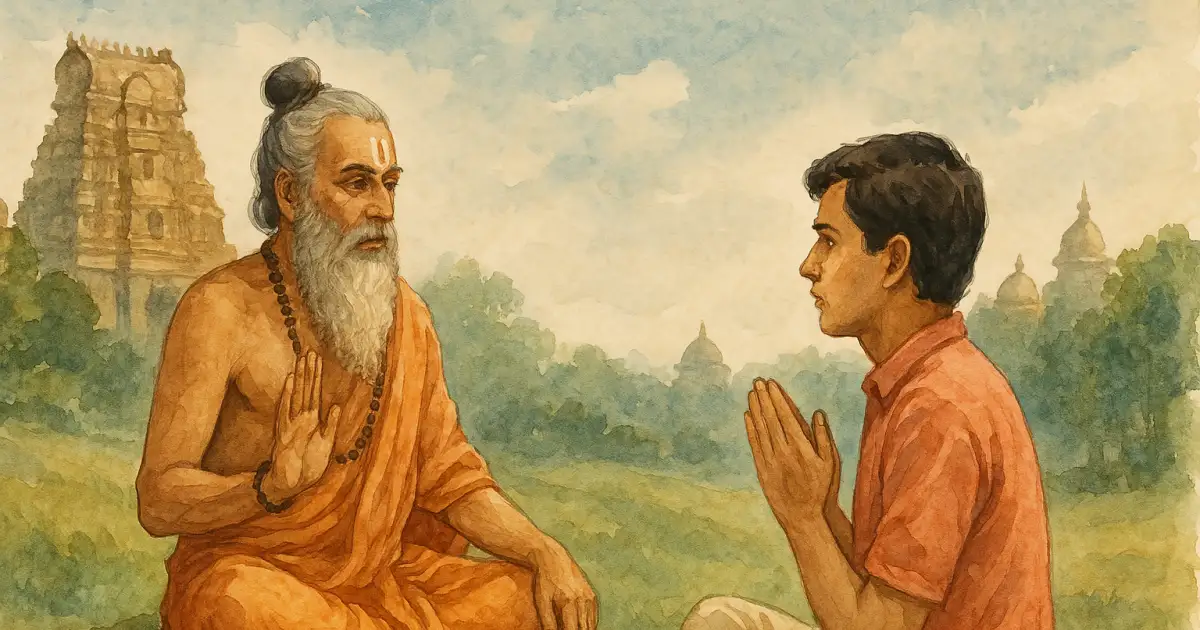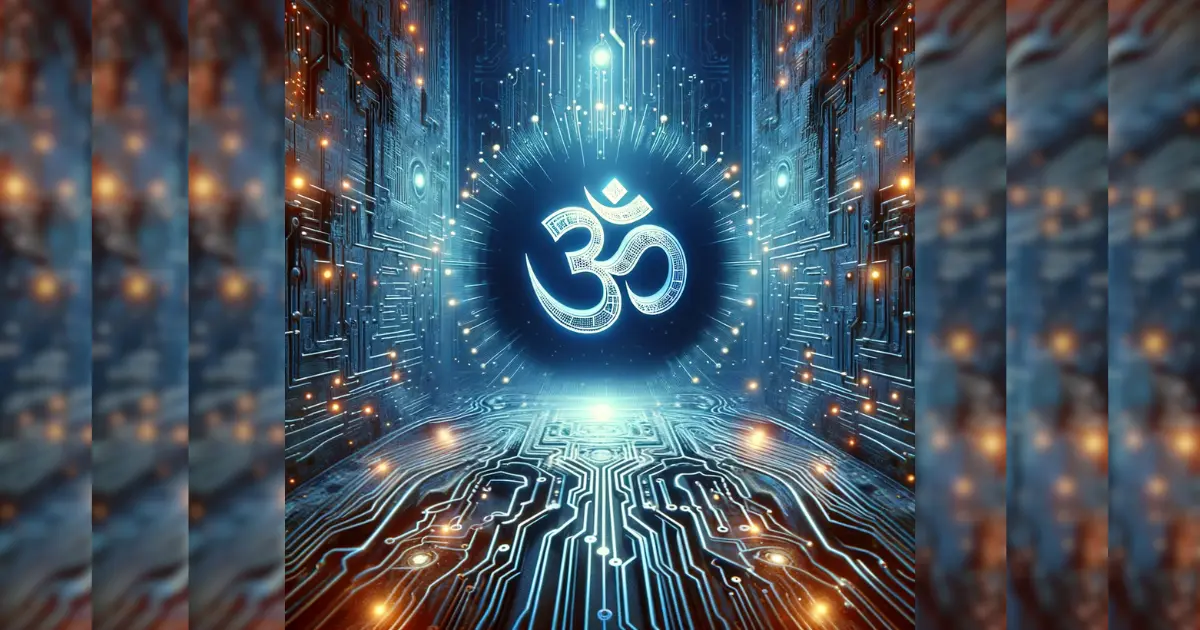Vijaya Muhūrta
The Vijaya-muhūrta is prescribed for:
- Āyudha Pūjā (worship of weapons and tools)
- Śamī Pūjā (worship of the śamī/vijayā tree)
- Sīmollāṅghanam (ceremonial crossing of boundaries by kings/warriors)
- Commencement of new works, study, journeys, etc.
It is considered more powerful if Ravi (Sun) is not in an inauspicious rāśi (e.g., Tulā, where he is debilitated—though tradition still honors it). It also marks the beginning of the preparations for Dīpāvalī, which is celebrated exactly twenty days later.
Timing
-
Day: Āśvina Śukla Daśamī (bright fortnight, 10th lunar day).
-
Muhūrta: The Vijaya muhūrta is defined as the eighth muhūrta of the day, counted from sunrise.
A muhūrta is approximately equal to 48 minutes. The day from sunrise to sunset is divided into fifteen muhūrtas. Therefore:
- Start of Vijaya Muhūrta ≈ 2 hours 24 minutes before local sunset.
- End of Vijaya Muhūrta ≈ 1 hour 36 minutes before sunset.
Legends Associated with Vijayadaśamī
- Devī Durgā’s victory over the asura Mahiṣāsura.
- Rāma’s victory over Rāvaṇa.
Scriptural References
Skanda Purāṇa: Chapter 52 – Description of Daśāśvamedha
- (90) On the Daśaharā day that removes the pāpa of ten births, the devotee should take a holy dip in the Daśāśvamedhika tīrtha. He shall never experience the torture of Yama.
- (91) By visiting Daśāśvamedheśa-liṅga on the Daśaharā tithi, one is undoubtedly absolved of pāpa acquired in the course of ten births.
- (92) If one takes a holy dip on the Daśaharā day and worships the excellent Daśāśvamedheśa-liṅga with great devotion, the fate of being conceived in a womb never touches him.
- (94) Certainly, one obtains the benefit of the valedictory baths of ten horse-sacrifices by taking the holy dip in the Daśāśvamedha tīrtha on the Daśaharā day.
Devī Bhāgavata Purāṇa: Chapter 30 – On the Narration of the Navarātra Ceremony by Nārada and the Performance of the Same by Rāmacandra
- (59) Vyāsa said: O king! Thus saying, the Devī disappeared. Rāmacandra became very glad and, completing that most auspicious ceremony, performed the Bijoyā Pūjā on the tenth day. He gave many presents to Nārada and sent him towards the ocean.
- (60–61) Thus stimulated by the Supreme Energy, the Highest Goddess, bringing Rāmacandra, the husband of Kamalā, face-to-face, went to the shores of the ocean, accompanied by Lakṣmaṇa and the vānaras. Then he erected the bridge across the ocean and killed Rāvaṇa, the enemy of the devas. His unparalleled fame spread everywhere throughout the three lokas.
- (62) He who listens with devotion to this excellent account of the Devī will get the greatest happiness in this world, and, in the end, will get the final beatitude.
Skanda Purāṇa (Vaiṣṇava Khaṇḍa, Navarātri Māhātmya 23.26–28)
Devanāgarī:
नवरात्रव्रतेनैव यः पूजयति चन्द्रिकाम् ।
दशम्यामुपवासेन स विजयी न संशयः ॥ २३.२६ ॥
IAST:
navarātravratenaiva yaḥ pūjayati candrikām |
daśamyāmupavāsena sa vijayī na saṃśayaḥ || 23.26 ||
Translation: Whoever worships the Goddess during the vow of Navarātri, and fasts on Daśamī, shall surely attain victory—of this there is no doubt.
Another verse:
दशम्यां तु नरैः सम्यक्पूजनीया अपराजिता।
ऐशानीं दिशमाश्रित्य अपराह्णे प्रयत्नतः॥
IAST:
daśamyāṃ tu naraiḥ samyakpūjanīyā aparājitā|
aiśānīṃ diśamāśritya aparāhṇe prayatnataḥ||
Translation: On the Daśamī tithi (the tenth lunar day), men should duly worship Aparājitā (Śamī) Devī. This worship should be performed with care in the north-eastern direction, during the afternoon.
Padma Purāṇa (Uttara Khaṇḍa 66.21–22)
Devanāgarī:
दशमी सर्वकार्येषु सर्वसिद्धिप्रदा स्मृता ।
तस्मात् सर्वप्रयत्नेषु कार्यारम्भे विशेषतः ॥ ६६.२१ ॥
IAST:
daśamī sarvakāryeṣu sarvasiddhipradā smṛtā |
tasmāt sarvaprayatneṣu kāryārambhe viśeṣataḥ || 66.21 ||
Translation: The Daśamī tithi is remembered as granting success in all undertakings. Therefore, in every effort, especially at the commencement of new works, Daśamī should be chosen.
Nirṇaya Sindhu states: Vijayā-muhūrtaḥ śrīmatām api sarvakāryeṣu saphalado bhavati
“The Vijaya muhūrta brings success in all undertakings, even for the already prosperous.”
Traditional jyotiṣa texts (e.g., Muhūrta Cintāmaṇi, Dharma Sindhu) give the technical calculation for Vijaya muhūrta.
Nārada Purāṇa: Chapter 119 - The Holy Rites to be Observed on Daśamī Days
20-22. The tenth day in the bright half of the month of Āśvina is glorified as Vijayā. In the morning, the devotee places four balls made of cow dung in the courtyard of the house in a semicircle (to resemble the horizon). He should worship the four warriors Rāma, Lakṣmaṇa, Bharata, and Śatrughna within this formation. Four vessels with lids are smeared with cow dung. Grains and silver coins are put inside, and the lids are closed. The vessels are covered with white silken cloth.
23. The devotee then worships them in accordance with the injunctions with scents, fragrant flowers, naivedyas, etc., accompanied by his family and servants.
24-25a. After paying obeisance, he feeds the brāhmaṇas who are duly honored. By performing this holy rite, the man remains happy throughout the year and shall decisively flourish in wealth and grains.
25b-31a. (Another holy rite) On the previous Navamī day, the devotee goes to a śamī tree and chants mantras. On the afternoon of the Daśamī day, the devotee goes again to the śamī tree located on the eastern side (of the village, etc.) and takes mud from the foot of the tree. Accompanied by songs and instrumental music, he brings the mud to his house. He worships the clay in accordance with the injunctions and arranges his army (this is for kings). He should go out of the village through the eastern gate without any perturbation. He should get the image of the enemy made using leaves, etc., or imagine the same. He should feel delighted that the deity will hit the enemy with an arrow that has a tail of gold. He should then return home at night. Or after making all these arrangements, he should proceed against the enemy to curb him (this is for kings). This Daśamī rite, performed always in accordance with the injunctions, shall bestow wealth, victory, sons, cows, elephants, horses, goats, and sheep in this world. After death, he attains the heavenly world.
31b-33. One should perform the holy rite of Sārvabhauma-Vrata (vrata for sovereignty over the world) on the tenth day.
The devotee should say the following:
34. May God Indra, the king of the Devas, the granter of all desired things, destroy the pāpa that is to my east as a result of my own actions.
35. May God Vahni (fire), the king of all splendors, the granter of all desired things, quell the pāpa that is to my southeast as a result of my own actions.
36. May Yama, the king of Pretas, ghosts, the bestower of all desired things, annihilate the pāpa that is to my south as a result of my own actions.
37. May Nirṛti, the king of Rākṣasas, the bestower of all desired things, wipe off the pāpa that is to my southwest as a result of my own actions.
38. May Varuṇa, the Lord of aquatic animals, the bestower of all desired things, destroy the pāpa that is to my west as a result of my own actions.
39. May Vāyu, the king of Maruts (gusts of wind), the bestower of all desired things, eradicate the pāpa that is to my north-west as a result of my own actions.
40. May Soma (Moon), the Lord of Ṛkṣas (constellations) and Yakṣas, the bestower of all desired things, quell the pāpa that is to my north as a result of my own actions.
41. May Īśāna, the lord of Bhūtas (goblins), the granter of all desired things, quell the pāpa that is to my north-east, as a result of my own actions.
42. May Brahmā (the Lord of the Prajāpatis), the granter of all desired things, annihilate the pāpa that is above, as a result of (my own) actions.
43. May Ananta, the king of serpents, the granter of all desired things, quell the pāpa that is stationed below me as a result of my own actions.
44. After offering oblations in the ten directions with complete concentration, he should offer oblations to Kṣetrapāla externally.
45. After completing the rites thus, the devotee should spend the remaining part of the night immersed in auspicious songs, recitation of hymns, japas, etc.
46. In the morning, he should take a bath, worship the guardians of the worlds (quarters), and honor and feed twelve brāhmaṇas. He should give them dakṣiṇā according to his ability.
47. After performing the holy rite thus, the devotee shall enjoy all auspicious worldly pleasures. After enjoying heavenly pleasures thereafter, for the duration of a yuga, he will become an emperor.
Current Celebrations
Rāma Līlā:
In Northern India, the festival is celebrated as Rāma’s victory over Rāvaṇa. The Rāma Līlā play is enacted for nine days and culminates in the burning of effigies of Rāvaṇa, Meghnāda, and Kumbhkarṇa on the tenth day/Daśaharā.
Kullu Daśaharā:
A mega fair is organized on Vijayadaśamī in the Kullu valley of Himachal Pradesh.
There is this legend that ṛṣi Jamadagni, on his way back from a pilgrimage to his hermitage in the village of Malana, was carrying different images of various deities in a basket on his head. On the way, while passing the Chanderkhani Pass, he got caught up in a storm and lost control of the basket. The images flew over all the hilly areas and manifested as deities. The hill people witnessed this spectacular vision and began worshipping the deities.
The other legend dates back to the 17th century CE. The King of Kullu, Rājā Jagat Siṃha, was once informed that a local brāhmaṇa, Durgadatta, owned precious pearls. However, the king did not know that these were pearls of wisdom. He set out to have them, and the intimidated brāhmaṇa burnt himself and his family to death, but not before cursing the king. As a result, the king developed a deadly disease and was informed that the curse could only be lifted by worshipping the deity Śrī Raghunāthajī (Rāma), which was in Ayodhyā. So, the deity was brought to Kullu. The king drank its caraṇāmṛta and was cured of the curse.
That is how the deity of Raghunāthajī became the presiding deity of Kullu. The mūrti is taken in a ratha during Daśaharā celebrations in Kullu. The tradition started in 1606 and continues to this day.
Southern India:
The 14th-century Vijayanagara Empire celebrated Mahānavamī with great fervor. Italian traveler Niccolò de' Conti mentions this in his writings. Portuguese travelers like Domingo Paes and Fernao Nuniz, who visited in the 16th century, described the grand Daśarā elephant procession as well as the Vajra-Muṣṭi-kalāga wrestling bouts during the festival celebrations.
Daśarā in Karnataka is celebrated for ten days with different alaṅkāras of the Devī worshipped each day. Many cultural programs are organised throughout this period. In the evening of the last day, the Goddesses are taken out in a procession. People exchange śamī tree leaves on this day. According to a legend, the leaves symbolize gold. The Golu/Kolu are also displayed on this day.
Sarasvatī is also worshipped on this day, during worship of tools/instruments of trade and work. In Kerala, too, Mā Sarasvatī is worshipped on this day. It is celebrated as Vidyārambham—the day one begins studies. A guru draws oṃ hari śrī gaṇapataye namaḥ on the tongue of a child with a ring dipped in honey. The child is guided to write this Hari Śrī mantra on rice kept in a round bowl. Children aged 3-4 are admitted to school on Vijayadaśamī day.
Madikeri Daśarā is celebrated in the Madikeri village of Karnataka. Over a century old, the celebration continues for ten days. Huge idols of 8-10 feet are set up, for which the village contributions are collected three months prior. Folklore has it that a disease once afflicted the people of Madikeri. The then-ruling king decided to start this festival, which was known as ‘Mariamma’. It continues till today, starting a day after Mahālayā Amāvasyā.
The Mangaluru Daśarā/Navarātri/Vijayadaśamī is organized by Ācārya Maṭha. The main attractions are the traditional tiger dance, lion dance, and bear dance, which are performed for all ten days. During the celebrations, the decorated vigrahas of Śāradā Devī, along with Mahāgaṇapati and Navadurgās, are worshipped.
Western India:
In Gujarat, Rāma and Durgā are both venerated for their victory over evil. Dandiya and Garba dances are performed throughout these ten days.
Goa celebrates this day as Dasro, marking Mā Durgā's victory over Mahiṣāsura. On this day, a ritual called sīmollāṅghanam is carried out where people make a symbolic crossing of the border of their village, and the mūrtis of deities are carried in a grand procession, paying respect to ancient traditions of kings winning over neighboring regions (possibly also to remember Rāma’s victory in Laṅkā). Then people exchange Āptyācī pāna. These leaves symbolize gold; hence, the ritual symbolizes the exchange of gold. The same is followed in Maharashtra too.
In Mewar, both Durgā and Rāma are celebrated on Vijayadaśamī. It is a major festival for Rājputs and the Rājput warriors from ancient times.
Eastern India:
West Bengal observes Bijoyā Daśamī after the ninth day, which is the last day of Durgā Pūjā, marking the immersion of the vigraha in rivers, lakes, sea, ponds, etc., amongst great celebrations.
Step-by-Step Guide to Daśaharā Pūjā
Like every ritual, some common pūjā materials are needed for Daśaharā Pūjā: cow dung, incense sticks, roli-mauli, sacred thread, kuṅkuma, rice grains, flowers, fruits, offerings, etc.
The Daśaharā pūjana should be performed before Rāvaṇa-dahana.
- This pūjā should be done in the north-east corner of the house.
- Clean the place of worship and make an aṣṭadala-cakra with lotus petals.
- Now install the vigraha of Mātā Aparājitā in the middle of this aṣṭadala-cakra, and invoke the mother by chanting oṃ aparājitāyai namaḥ.
- After this, install Goddess Jaya on the right side and Vijaya on the left side.
- Now worship all three goddesses according to the ṣoḍaśopacāra method and offer them incense, lamps, offerings, etc.
- On the occasion of Daśaharā, also worship Lord Śrī Rāma and Bajaraṇgabalī (Hanumān).
- In the end, perform the āratī of all the divine powers and pray for the happiness and prosperity of the family.
Aparājitā Pūjā
Devī Aparājitā is worshipped on the day of Vijayadaśamī for victory. The best time to perform Aparājitā Pūjā is aparāhṇa (अपराह्ण) time (usually afternoon) as per the Hindu division of time.
It is believed that Lord Rāma worshipped Goddess Aparājitā on Vijayadaśamī before His departure for Laṅkā to defeat Rāvaṇa. Goddess Aparājitā is worshipped before starting any journey, as Her blessings help to fulfill the purpose of the journey and make the journey safe.
Mantras
इमां पूजां मयां देवि यथाशक्ति निवेदिताम्।
रक्षार्थं तु समादाय व्रजस्व स्थानमुत्तमम्॥
Meaning: O Devī, after accepting my pūjā, which was done as per my capacities for victory, please depart for your place.
हारेण तु विचित्रेण भास्वत्कनकमेखला।
अपराजिता भद्ररता करोतु विजयं मम॥
Meaning: O Aparājitā Devī! Who shines with a multi-colored necklace and is adorned with a golden belt, please bestow victory on me.
Śamī Pūjā
Śamī pūjā is one of the important rituals performed on the Vijayadaśamī day. Traditionally, śamī pūjā is done by kṣatriyas and kings. Any śamī tree situated in the north-east of the town or city is preferred for the pūjā.
The śamī tree is also known as the choṃkara (छोंकर) tree in some regions. If the śamī tree is not available, then the aśmantaka (अश्मन्तक) tree can be used for the pūjā. The aśmantaka tree is also known as the baheḍā (बहेडा) tree. Śamī pūjā is also known as banni pūjā and jammi pūjā in some of the southern states of India.
Mantras
- अमङ्गलानां च शमनीं शमनीं दुष्कृतस्य च।
दुःस्वप्रनाशिनीं धन्यां प्रपद्येऽहं शमीं शुभाम्॥
- शमी शमयते पापं शमी लोहितकण्टका।
धारिण्यर्जुनबाणानां रामस्य प्रियवादिनी॥
- करिष्य…
Āyudha Pūjā (Worship of Weapons)
There is also a tradition of worshipping equipment on the day of Daśaharā. For this pūjā, spread a white cloth mat in a clean north-east corner and place your weapons and equipment on it. Install the vigraha of Mā Durgā and offer incense, lamp, and other offerings. Also, apply the tilaka of rice and roli on the weapons and equipment, and tie the mauli. After this, perform the āratī of Mā Durgā and pray to her for protection from enemies.
Conclusion
Vijayadaśamī/Daśaharā/Daśarā symbolizes victory over desires, over pāpa, over vices, over enemies, etc. It symbolizes the day the Devī is pleased and grants the wishes of her people. It is a beautiful conclusion to the Śāradīya Navarātris and starts the countdown for Dīpāvalī celebrations.
References
- Dussehra Puja Vidhi | दशहरा पूजा विधि
- 2025 Shami Puja | Sami Puja Date and Time for New Delhi, NCT, India
- 2025 Aparajita Puja date and time for New Delhi, NCT, India
- The Skanda-Purana, Part 1: J. L. Shastri, G. P. Bhatt: Free Download, Borrow, and Streaming
- Padma Purana Part 1: Shivaprasad (Chaukhamba): Free Download, Borrow, and Streaming: Internet Archive
- Devi Bhagavata With Hindi Translation: Free Download, Borrow, and Streaming: Internet Archive
- International Kullu Dussehra
- Chapter 119 - The Holy rites to be observed on Daśamī days





